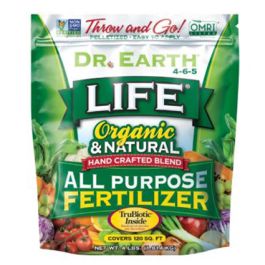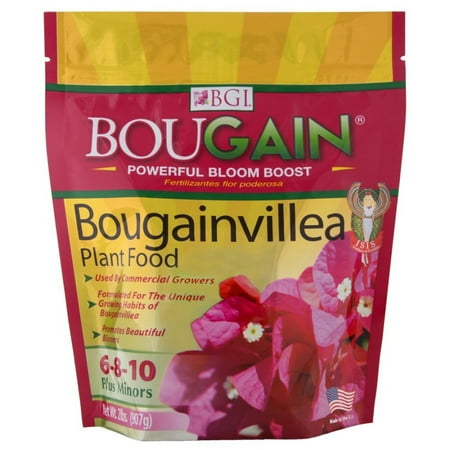How to fertilize bougainvillea – for vibrant flowers
Knowing when and how to fertilize bougainvillea can help your plants thrive


Bougainvillea are long-flowering climbing plants renowned for producing brightly colored blooms for much of the spring, summer, and fall. These vibrant climbers often remind me of holidays in southern Europe, cascading over white-washed walls on sun-drenched streets. While your reality might be a little different from this postcard-like image of a Greek island, growing bougainvillea can help to beautify any outside space and transport you - even if only for a minute - to a faraway place.
When considering how to care for and grow bougainvillea, these plants are native to warmer regions and zones and grow best in sheltered spots and full-sun positions. With the right conditions and care, bougainvilleas can grow up to 3 feet in a single growing season. It is no wonder that they are often thought of as some of the best climbing plants to grow for color, impact and vigor.
Knowing how to fertilize bougainvillea plants is important, and while these tropical-looking climbers can often grow just fine without regular fertilization, feeding in the spring and summer can help support plant growth and extend flowering. Here, plant experts advise on the most suitable timing and best approach to feeding your bougainvillea.

How to fertilize bougainvillea
If you are looking for a colorful climber, planting a bougainvillea in your yard is sure to make a bold statement. Whether growing these climbing plants at the front of the house or perhaps vining over a structure in the backyard, vibrant pink, purple, or yellow blooms will undoubtedly add impact to your space.
These plants are native to South America and tend to grow best in US hardiness zone 9 and US hardiness zone 10, so be sure to position them in a sunny and protected area in the yard. If you have an established climber, or a recently planted one, fertilizing bougainvillea is a job to add to your summer gardening checklist.
When to fertilize bougainvillea
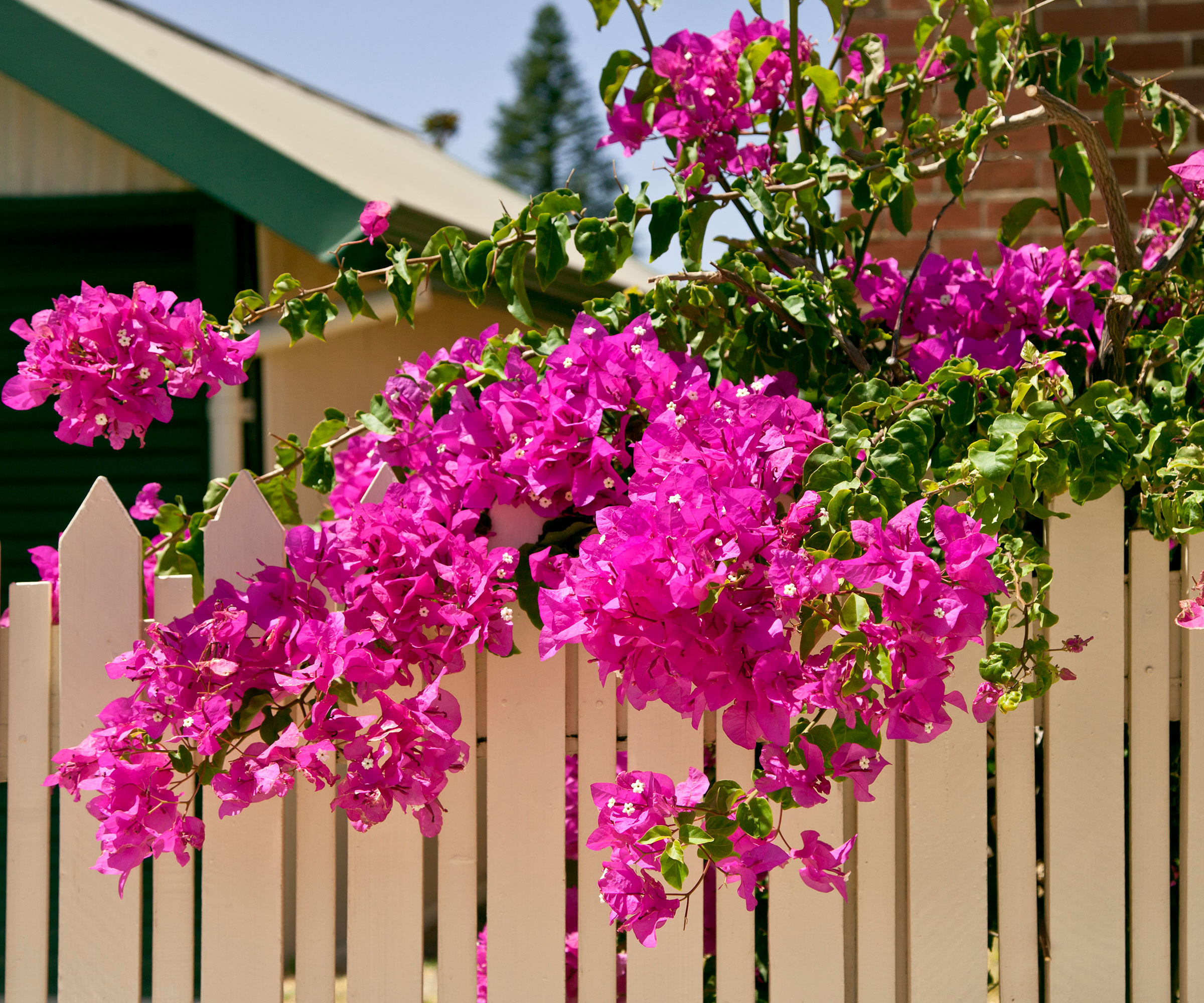
'Bougainvilleas are light feeders and can often go years without needing fertilization,' says Sam Niemann, garden expert and founder of Grown by Design, a boutique landscape design firm based in San Diego.
However, if your bougainvillea is not flowering or blooming has been poor this year, it can be a sign that your climber could do with some fertilizer for a boost.
For bougainvilleas growing in the ground, Sam says the 'best time to fertilize is in early spring.' Following a 'light feeding schedule helps maintain healthy blooms without over-stimulating foliage growth,' Sam adds.
For bougainvillea plants grown in pots, I would suggest feeding once a month from spring until the end of summer. As with any plants grown in pots, bougainvilleas in containers need more watering and feeding than those planted directly in the ground.

Sam is a lifelong gardener whose passion for plants and nature has been the driving force behind his extensive knowledge and expertise in horticulture. He studied at San Diego State University, earning a degree in Finance while simultaneously founding Grown by Design, a boutique landscape design firm.
How to fertilize bougainvillea
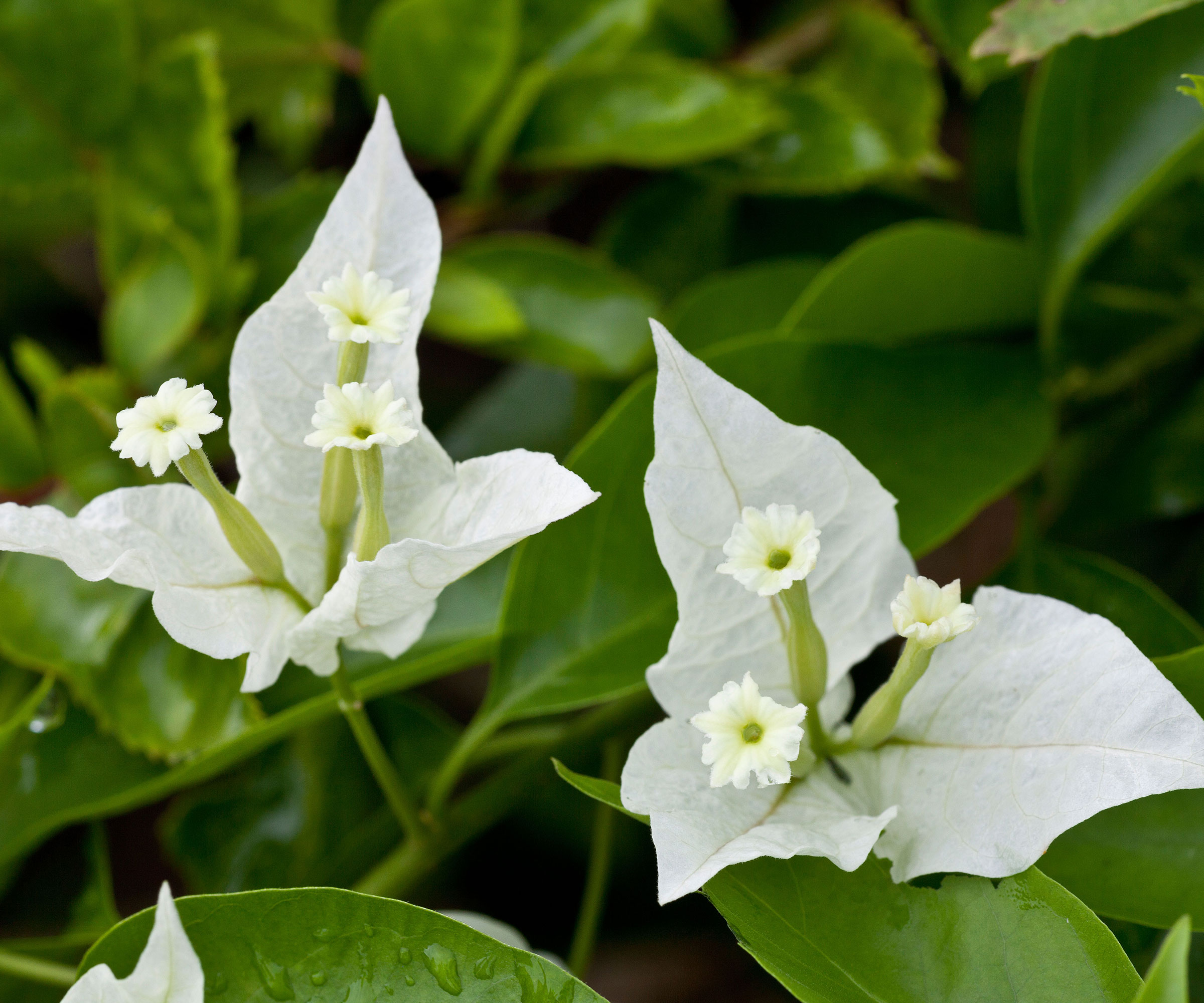
'Bougainvilleas love the sun but do best when they thoroughly dry out between waterings and feedings,' says Bert Bast, garden expert and owner of Bast Brothers Garden Center. It is important to remember that these tropical plants thrive with sunshine and prefer dry soils.
'If they are planted in the ground, you should not need to fertilize,' Bert adds, 'I usually just add some fresh mulch and compost to the borders each year to improve soil health.' Mulch is available to order online from Walmart.
'If your bougainvillea appears stressed, or you are seeing yellowing leaves or a reduction in blooming, it might be time to apply a small amount of fertilizer,' Bert continues.
For plants in containers, Bert recommends using an organic fertilizer 'to continually improve soil conditions.' Feeding consistently at regular intervals during the spring and summer is best, 'so that your plants remain healthy,' Bert says. Bougainvillea fertilizer is available from Walmart.
Typically, fertilizers high in nitrogen will help if you want to encourage leafy, green growth, while feeds high in potash - or potassium - will help boost flower production and intensify the color of the blooms. Many products that are high in potash are available to buy in garden stores or online, such as this tomato feed from Amazon.
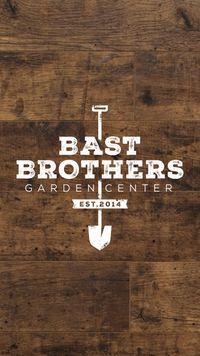
Bert Bast is a garden expert and owner of Bast Brothers Garden Centre. Established in 2014 and nestled in the heart of Mullica Hill, NJ, Bast Brothers Garden Center is a destination for all things garden.
Shop bougainvillea fertilizers
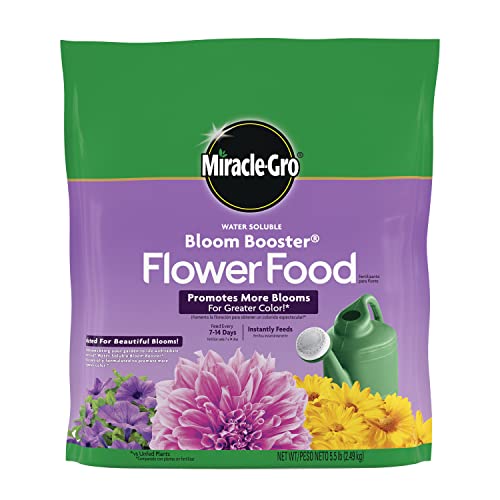
This Miracle-Gro bloom booster fertilizer promotes healthy and colorful blooms and can used for all types of annual and perennial flowers.
FAQs
What fertilizer will encourage leafy, green growth for a young bougainvillea?
If you have recently planted young bougainvillea in your yard, consider applying a fertilizer high in nitrogen. This is recommended for encouraging plenty of lush new stems and foliage. Fertilizers that are high in potassium will encourage flower production.
While feeding bougainvilleas is not always necessary, fertilizing can help improve plant health and blooming during the growing season, particularly for climbers grown in pots. For more bougainvillea growing advice, see our guide on how to prune bougainvillea, to trim and tidy your climbers this year.
Sign up to the Homes & Gardens newsletter
Design expertise in your inbox – from inspiring decorating ideas and beautiful celebrity homes to practical gardening advice and shopping round-ups.

Thomas is a Content Editor within the Gardens Team at Homes and Gardens. He has worked as a professional gardener for both public spaces and private estates, specializing in productive gardening, growing food and flowers. Trained in Horticulture at the Garden Museum, he has written on gardening and garden history for various publications, including The English Garden, Gardens Illustrated, Hortus, The London Gardener and Bloom. He has co-authored a Lonely Planet travel book, The Tree Atlas, due out in 2024.
-
 5 surprising but brilliant ways to clean with old socks – from perfectly buffing stainless steel to deterring pests naturally and more
5 surprising but brilliant ways to clean with old socks – from perfectly buffing stainless steel to deterring pests naturally and moreTackle dust in tricky corners, clean your mirrors and even banish bad odors with those rogue single socks
By Andy van Terheyden Published
-
 How to grow astilbe – expert advice on cultivating this shade-tolerant flowering perennial
How to grow astilbe – expert advice on cultivating this shade-tolerant flowering perennialShade-tolerant and pest-resistant - astilbe are hardy and tough perennials that can thrive in many settings
By Ellen Wells Published
